
1791 frontier house
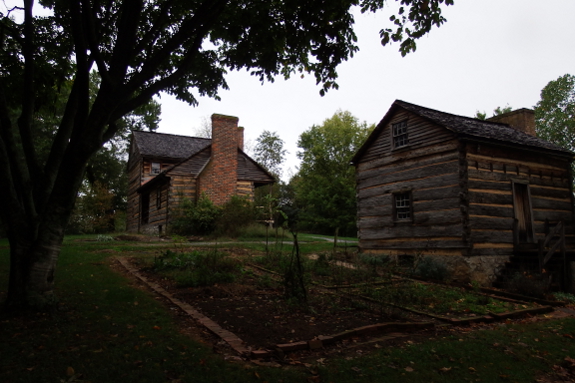
Rocky Mount
was another of those local attractions that I visited as a school kid
but was clearly too young to fully appreciate at the time. Emily and her
husband met us there for a tour, and we were all amazed by the museum
and (even more so) by the re-creation of frontier life out back.
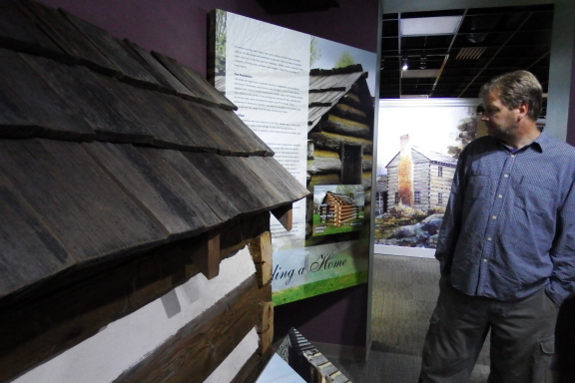
But I'll start in front, where Mark was quite taken by the shake roofs that covered the barn, sheds, and houses.
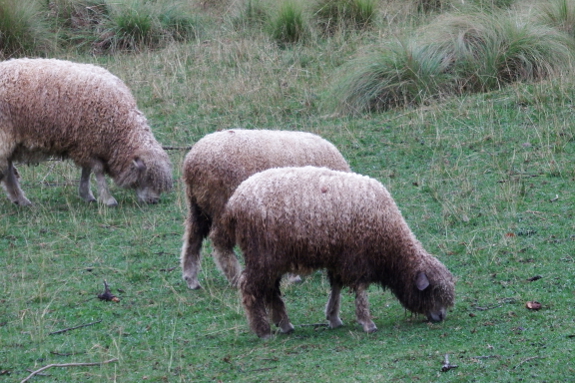
I, of course, was more
drawn to the heirloom sheep and to the orchard, where I snagged a few
pears that otherwise seemed destined to rot on the ground.
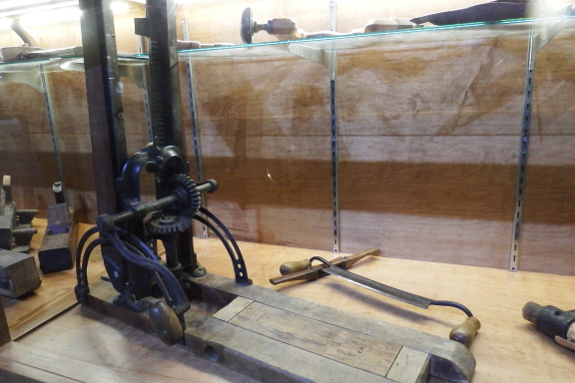
Inside, Mark's toolish eye immediately picked out the hand-cranked drill press...
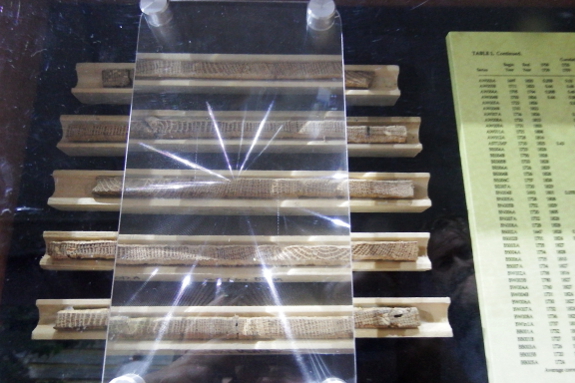
...while I was more interested in the idea of using coring technology to learn about the trees that made up the log houses.
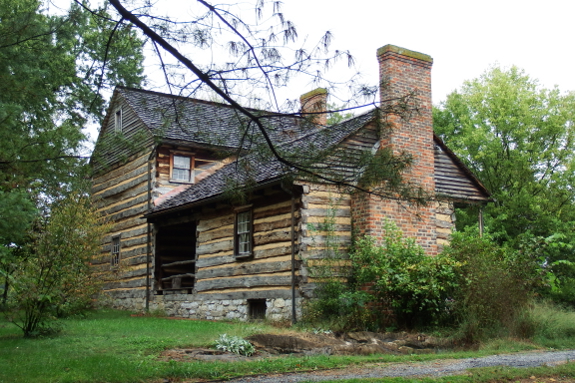
Speaking of log houses, the real adventure began when we finished our
interior journey and stepped into the world of 1791. The
farmstead of the Cobb family has been lovingly salvaged and restored and
tour guides dressed in period clothing welcome you inside to learn
about their life after the Revolutionary War.
Above, you can see the
main house, with the typical dogtrot (covered porch) joining the
original smaller house with the larger addition. The Cobbs were quite a
wealthy family, evidenced by the size of their house and by the presence
of glass windows. There is no kitchen in the main house either --- just
living and sleeping accommodations --- since the family was rich enough
to own slaves. As we learned later in our tour, all food was cooked in a
separate building and delivered in stages to the family and to their
numerous guests.
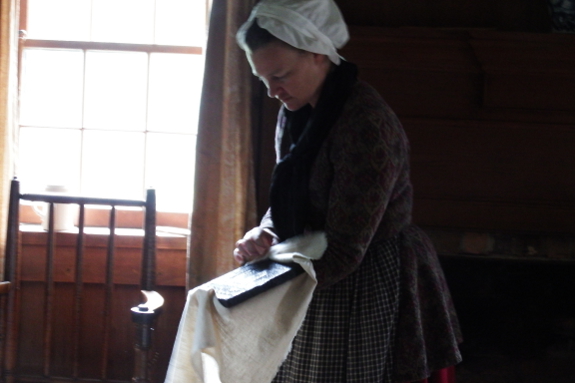
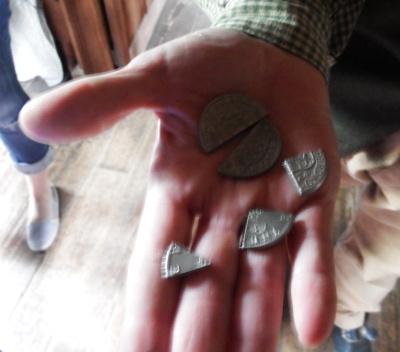 Mark called the tour guides actors,
but I was able to suspend my disbelief most of the time and accept that
they were real people of 1791 welcoming us into their lives. (Yes, I do
find it particularly easy to live in a fantasy world. Why do you ask?) I
could feel this woman's wonder and care as she unwrapped a block of tea
from China, which she informed us would cost more than a day of a man's
wages. And I was intrigued by the pieces of eight (called "bits" here
on the frontier), by straw ticking for children's mattresses (easier to
restuff than feathers if younguns wet the bed), and by standing writing
desks.
Mark called the tour guides actors,
but I was able to suspend my disbelief most of the time and accept that
they were real people of 1791 welcoming us into their lives. (Yes, I do
find it particularly easy to live in a fantasy world. Why do you ask?) I
could feel this woman's wonder and care as she unwrapped a block of tea
from China, which she informed us would cost more than a day of a man's
wages. And I was intrigued by the pieces of eight (called "bits" here
on the frontier), by straw ticking for children's mattresses (easier to
restuff than feathers if younguns wet the bed), and by standing writing
desks.
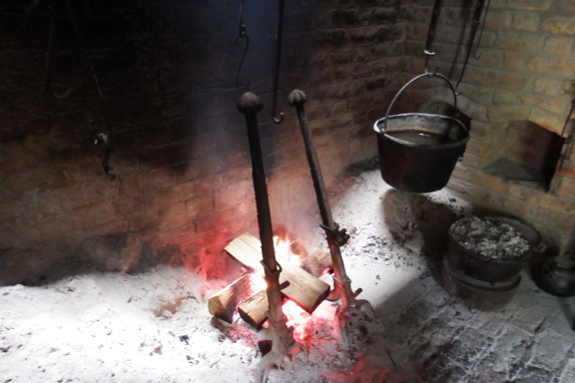
But the best part of the
tour came when we reached the kitchen, complete with drying herbs, huge
cooking hearth, meat spit, and warming oven. Off to the left (not
visible in this picture) was a bread oven, fired up once a week for a
huge day of baking. "We never bake on Mondays," our guide explained,
"Because it takes the entire day beforehand to prepare, and Sunday is
the Sabbath."
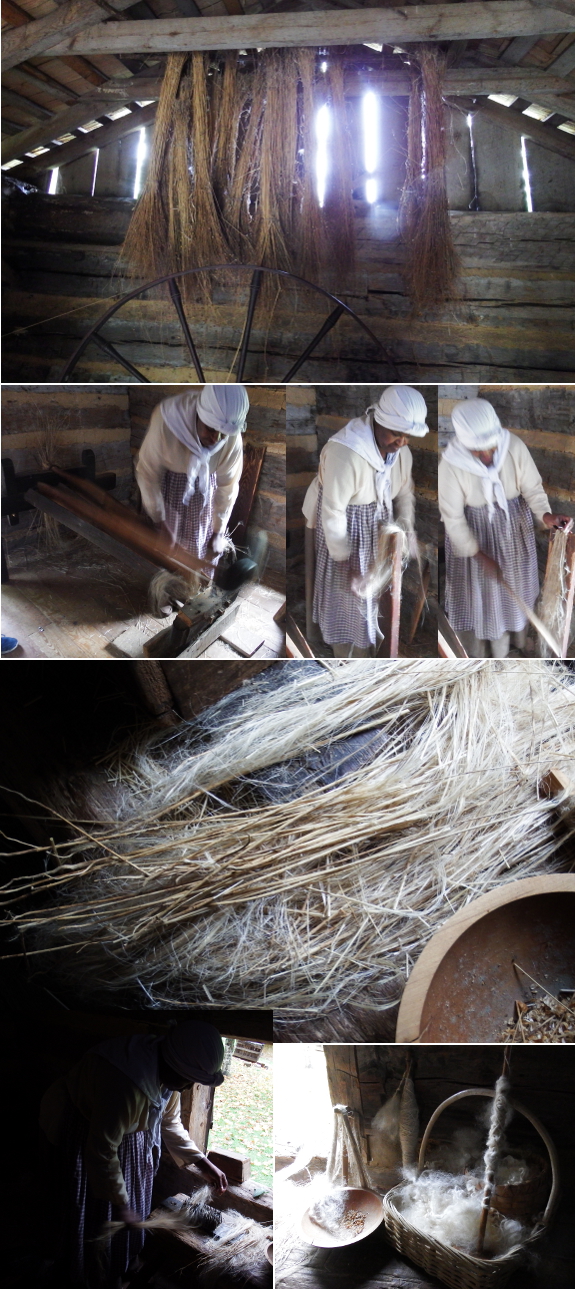
Okay, I lied. The real
best part was when the cook brought us down to the weaving house. I've
seen spinning and weaving before, but had never watched flax being
transformed from plant to thread. The process was astonishing.
First, you dry the plants
for a couple of years, then you pound them with a heavy weight thing to
loosen up the woody exterior fibers. (Yes, I missed all of the proper
words --- I should have been taking notes.) Rubbing bundles of loosened
flax across a post and then hitting it with a stick knocks off most of
those woody fibers, but you really turn the flax into thread by pulling
it through a metal brush. Add in some wool from the farm's sheep and
you've got fire-resistant linsey woolsey, perfect for a cook who spends
her days flapping a long skirt at an open flame.
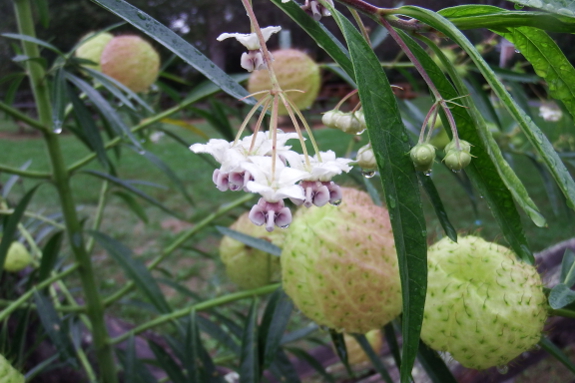
I won't write more
because I don't want it to take you as long to read this post as it took
us to suck up all that Rocky Mount has to offer. But I highly recommend
this outing, which costs $7.50 apiece with a AAA card. We spent three
full hours in the museum and on the grounds, and if I hadn't been
starving we likely would have stayed longer. Go after lunch and stay all
afternoon --- you won't regret it!
Want more in-depth information? Browse through our books.
Or explore more posts by date or by subject.
About us: Anna Hess and Mark Hamilton spent over a decade living self-sufficiently in the mountains of Virginia before moving north to start over from scratch in the foothills of Ohio. They've experimented with permaculture, no-till gardening, trailersteading, home-based microbusinesses and much more, writing about their adventures in both blogs and books.
Want to be notified when new comments are posted on this page? Click on the RSS button after you add a comment to subscribe to the comment feed, or simply check the box beside "email replies to me" while writing your comment.

We had a blast! Rocky Mount is one of my favorite places, anyway! I keep meaning to actually show up for the sheep shearing or one of the other special events.
And if you can catch the people in costume out in the world, they call themselves reenactors.